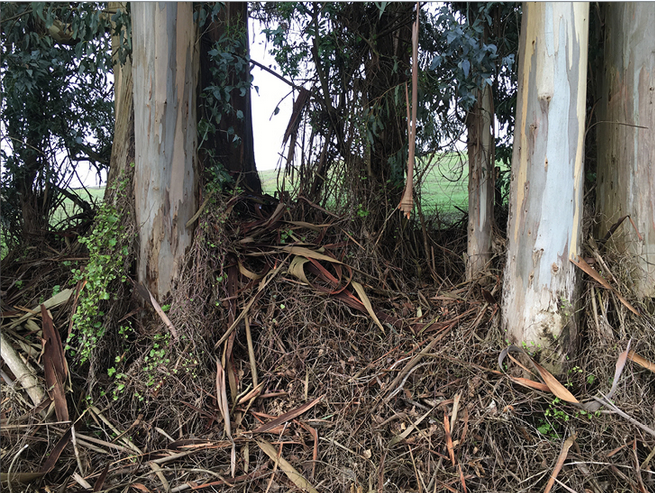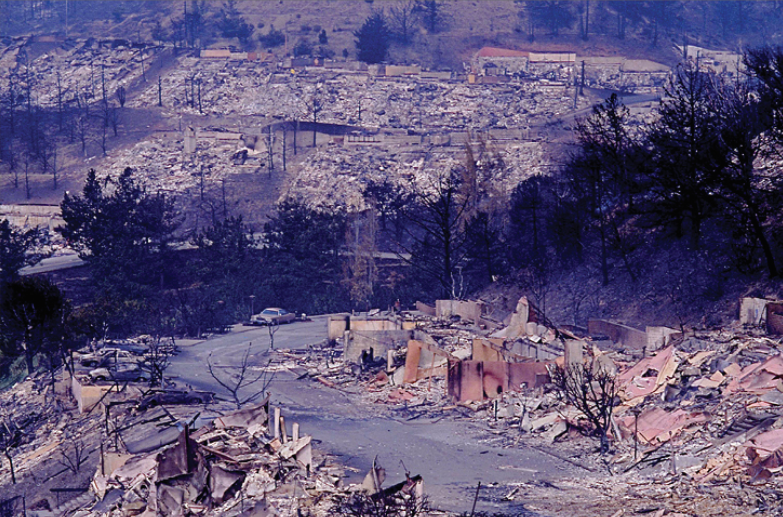 In a decision that could have devastating consequences for residents of the East Bay Hills, the Federal Emergency Management Agency (FEMA) has withdrawn $3.5 million in grant money from the City of Oakland and UC Berkeley that would have funded conduct critical fire-preventing vegetation management. FEMA’s decision blocks UC Berkeley and Oakland from taking action to protect some of the most fire-prone land in the state.
In a decision that could have devastating consequences for residents of the East Bay Hills, the Federal Emergency Management Agency (FEMA) has withdrawn $3.5 million in grant money from the City of Oakland and UC Berkeley that would have funded conduct critical fire-preventing vegetation management. FEMA’s decision blocks UC Berkeley and Oakland from taking action to protect some of the most fire-prone land in the state.
“This week’s reversal of a decades-long, science-based process is the result of a legal settlement with a misguided special-interest group,” said Norman La Force, chair of Sierra Club’s East Bay Public Lands Committee. “The vast area that FEMA has now abandoned includes the site of a 1970 fire that tore through 70 homes as well as the area hit by the 1991 Oakland Hills Firestorm, which killed 25 people and destroyed 3,000 homes. Ironically, FEMA’s decision to pull funding for fire prevention at the site of the 1991 firestorm comes just one month before the 25th anniversary of that terrible disaster.”
The City of Oakland and UC Berkeley had their grants pulled because they sought to be allowed to move forward with a ecologically and fiscally sustainable model for fire management known as “Remove, Restore, Re-establish” (AKA the “Three R’s”) that not only reduces the risk of fires, but also promotes diverse and healthy ecosystems. This preferred strategy for vegetation management in the East Bay hills entails removing the most highly flammable, ember-generating trees like eucalyptus in phases — and only in select areas considered most at risk for fire along the urban-wild interface. Once the flammable non-native trees are removed, less flammable native species can reclaim those areas and provide for a rebound of biodiversity. This strategy has the support of many fire experts, public officials, and environmental groups like the Golden Gate Audubon Society, the California Native Plant Society, and the Claremont Canyon Conservancy.
FEMA originally supported the “Three R’s” strategy, but a lawsuit by the advocacy group Hills Conservation Network (HCN) led FEMA first to switch its support to a weakened plan (thinning), and now to withdraw funds altogether for nearly half of the original project area.
 In the wake of the devastating Oakland Hills Firestorm, FEMA originally sought to fund fire-prevention on about 933 acres of land managed by UC Berkeley, the East Bay Regional Park District, and the City of Oakland. Both FEMA’s Environmental Impact Study of vegetation management in the East Bay Hills (a 10-year, multi-million-dollar process) and the U.S. Fish and Wildlife Service Biological Opinion on the plan considered the full 933-acre, three-agency swath of land. FEMA has now pulled funds for 400 of these acres, leaving some of the East Bay Hills’ most densely inhabited areas vulnerable to deadly and destructive wildfires.
In the wake of the devastating Oakland Hills Firestorm, FEMA originally sought to fund fire-prevention on about 933 acres of land managed by UC Berkeley, the East Bay Regional Park District, and the City of Oakland. Both FEMA’s Environmental Impact Study of vegetation management in the East Bay Hills (a 10-year, multi-million-dollar process) and the U.S. Fish and Wildlife Service Biological Opinion on the plan considered the full 933-acre, three-agency swath of land. FEMA has now pulled funds for 400 of these acres, leaving some of the East Bay Hills’ most densely inhabited areas vulnerable to deadly and destructive wildfires.
In response, UC Berkeley has sent FEMA a letter calling its action "illegal, invalid, arbitrary and capricious" and demanding that they reinstate grant funds. The letter goes on to say, "FEMA’s purported termination is arbitrary and capricious because it is entirely unsupported by the decade-long administrative process that led to Project approval... FEMA’s attempt to arbitrarily abandon certain portions of the entire Project — without notice to or consent from the implementing agencies — does not negate the existence of the multi-year federal review and approval process." The University has told FEMA that it will "consider all available legal options and remedies" to restore the grant funding.
The East Bay Regional Park District has been allowed to keep its portion of FEMA’s grant money because it has expressed its intent to move forward with the weakened “compromise” plan, thinning. While thinning the East Bay Hills’ eucalyptus and Monterey pine plantations seems like an appealing compromise, in reality it compounds the problem. Thinning actually denudes hillsides to an even greater extent than selective removal and restoration, because in order to keep the hills fire safe, it requires regular, wholesale clearing of the understory and hanging debris — including native vegetation. This has to happen on an ongoing basis. Thinning means that our hills will end up being a eucalyptus monoculture with a bare understory.
“Given the very serious drought conditions facing California, combined with longer and more serious wildfire seasons due to climate disruption, it’s more important than ever to prioritize fire prevention in our vegetation management strategies for the East Bay Hills,” said the Sierra Club SF Bay Chapter’s director Minda Berbeco. “The Sierra Club and its partners will continue to work with local, state, and federal governments to ensure that the work needed to ensure the long-term safety of our hills is done, and is done right.”
Read much more about the Sierra Club’s preferred strategy for fire-prevention in the East Bay Hills at www.sierraclub.org/sfbay/hillsfacts.
Photos: Eucalyptus trees drop much more fuel than native trees, and debris build-up can become draped in a near-optimal mixture of oxygen and fuel (top); The remains of the 1991 Oakland Hills Firestorm, which remains the most destructive wildfire in California history. It destroyed over 3,450 homes, killed 25 people, and injured 150 others. Photo courtesy of the California Governor's Office of Emergency Services Flickr account (bottom).